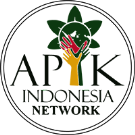MODEL DINAMIK PENGELOLAAN SUMBERDAYA LAHAN DI KOTA BANDAR LAMPUNG
DOI:
10.29303/jbl.v6i1.899Published:
2023-03-12Issue:
Vol. 6 No. 1 (2023)Keywords:
Model Dinamik; Kesesuaian Lahan; Pembangunan BerkelanjutanArticles
Downloads
How to Cite
Downloads
Metrics
Abstract
The rate of population growth has an impact on the carrying capacity of the environment because the need for land is directly proportional to the increase in population growth, so land conversion can occur. The population growth rate of Bandar Lampung City reached 2.70% with a population in 2020 reaching 1,166,066 people and a built-up area of ​​9,920 hectares. The purpose of this study is to build a dynamic model of land resources in Bandar Lampung City by presenting a land suitability map for Bandar Lampung City, making a dynamic system analysis model for land resources and recommending policies for sustainable land resource management in Bandar Lampung City. The tools used are Stella, Acrgis and AHP (Analytical Hierarchy Process) applications. Based on land capability analysis, Bandar Lampung City has sufficient development capability. Based on the results of the AHP, the environmental aspect is a priority aspect in land resource management that supports sustainable development with an eigenvalue of 0.53 and the selection of scenario 1 is to maintain a protected area/limit with an eigenvalue of 0.56. The model is built from three sub-models, namely population sub-model, land use sub-model and economic sub-model. The model is validated by comparing the actual value and the simulated value. Statistical testing was carried out using the t-test with an acceptable deviation limit of 5%. The results of the scenario 1 simulation show that current resource management can still guarantee an increase in the built-up land for the next 20 years of simulation, but this must be followed by the addition of green open space (RTH) results. The need for green space must be met to support the balance with the built area. To maintain protected areas, namely implementing the fulfillment of green open space needs.
Author Biography
Dear Mapala Simarmata, Universitas Lampung
License
Copyright (c) 2023 Dear Mapala Simarmata, Abdullah Aman Damai, Bambang Utoyo Sutiyoso, Teguh Endaryanto, Maulana Muklis, Muhammad Irfan Affandi

This work is licensed under a Creative Commons Attribution 4.0 International License.
The Authors submitting a manuscript has understood that if accepted for publication on Jurnal Belantara, the copyright of the article shall be assigned to Jurnal Belantara of the Forest Study Program University of Mataram as the publisher of the journal. Copyright encompasses rights to reproduce and deliver the article in all forms and media, including reprints, photographs, microfilms, and any other similar reproductions, as well as translations.
Jurnal Belantara of the Forest Study Program University of Mataram and the Editors make every effort to ensure that no wrong or misleading data, opinions, or statements be published in the journal. In any way, the contents of the articles and advertisements published in Jurnal Belantara are the sole responsibility of their respective authors and advertisers.
We strongly encourage that manuscripts be submitted to the online journal system in http://belantara.unram.ac.id/index.php/JBL/index. Authors are required to create an account and submit the manuscripts online. For submission inquiries, please follow the submission instructions on the website. If the author has any problems with the online submission, please contact Editorial Office at the following email: belantara@unram.ac.id
Contributors are responsible for obtaining permission to reproduce any materials, including photographs and illustrations, for which they do not hold the copyright and for ensuring that the appropriate acknowledgments are included in the manuscript.
Users of this website will be licensed to use materials from this website following the Creative Commons Attribution 4.0 International License. No fees charged. Please use the materials accordingly.




